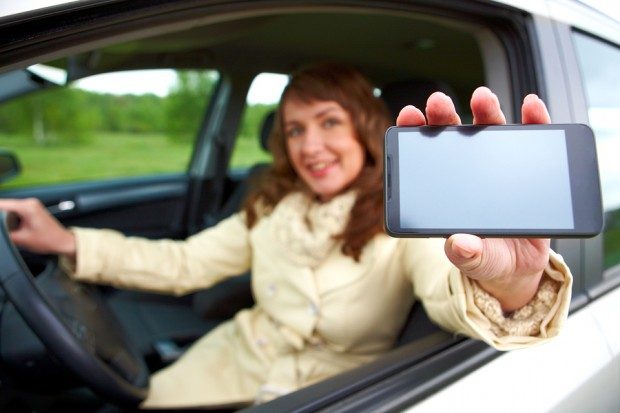As roads become increasingly more dangerous, due in part to drivers using their mobile phones, attempting to reduce distracted driving through laws is a step in the right direction.
Executive Summary
MIT Professor Hari Balakrishnan, the co-founder of Cambridge Mobile Telematics, believes laws banning the use of mobile phones can only go so far in solving the problem of distracted driving, which has fueled a spike in fatal accidents. Here, he proposes that insurers become part of the solution by using smartphone sensors to detect not just vehicle-related behaviors like excessive speeding and hard braking but also when drivers are distracted by using their phones.Editor’s Note: CMT is a smartphone-centric telematics provider.
Ten years ago, Washington became the first state to pass a ban against texting while driving. This summer, it became the 15th state to make any hand-held cellphone use while driving a primary offense, meaning an officer may pull over and cite a driver for that violation.
Are laws and the threat of punishment enough to make lasting improvements to driving behavior? To answer that, let’s consider another question: Do speed limits make everyone travel at a safe and reasonable speed?
Although laws like these are designed to make us safer, they don’t guarantee obedience, much less behavioral change. Drivers need to drive more safely, but state legislators can only do so much.
Insurance companies, on the other hand, have an opportunity to make a lasting impact on driver safety. And by doing so, not only can they help drivers and society, they can also strengthen themselves.
The insurance industry has observed some troubling trends over the past few years. The number of fatal accidents has risen by about 18 percent in the past two years. The frequency and severity of insurance claims has also risen, according to the Insurance Information Institute. One reason, of course, is an increase in driven miles due to an improving economy, but that alone doesn’t account for the trend. The growing popularity of the smartphone and its role as a fundamental cause of distracted driving is evident. As insurance claims have risen, many insurers are struggling to be profitable and have been forced to raise rates.
Few would argue that the rise of smartphone use while driving is correlated to auto insurers’ rising loss ratios. Data analyzed by Cambridge Mobile Telematics from about a million drivers running smartphone-based safe-driving apps (including about 1,000 verified crashes) shows that drivers in a crash have phone distraction scores 3.4 times higher than the average driver. These drivers also rack up 1.6 times more miles than the average driver—the important point being that phone distraction is a prominent predictive factor of distracted driving behavior.
Thus, shouldn’t insurers use smartphone sensors to detect phone distraction and more accurately capture risk and segment customers? Insurers can then apply proven mechanisms like behavioral economics to incentivize safe driving, both improving their bottom lines and making our roads safer.
While on-board diagnostic (OBD) dongles have been used to measure driving behavior for some time, smartphones have distinct advantages when it comes to supporting usage-based insurance programs. Not only can they measure vehicle-related behaviors like excessive speeding and hard braking, but they can detect when drivers are distracted by them. Our data shows that the worst 10 percent of drivers with the most phone distraction (manipulating a phone with the screen on while the vehicle is moving) have a crash rate 7.3 times higher than the best 10 percent of drivers with the least amount of distraction—a substantial “lift” that is significant at every decile. This data shows that smartphone-based programs that measure all these behaviors are an incredibly powerful predictor of risk—better than traditional factors like credit scores.
Another advantage of smartphones is that they can provide drivers with engaging feedback regarding their behavior to help them identify and curb dangerous habits. This feedback along with app gamification and competitions motivate drivers to improve their behavior and drive safer. Our data reveals that simple incentives grounded in behavioral science, such as a safe-driving score, can reduce distracted driving by 35 percent and excessive speeding by 20 percent within 30 days on average, with these improvements persisting for many months. In fact, the data represents that the vast majority of drivers improve their driving score by at least 10 percent with the right incentives.
Based on the massive amount of behavioral and telematics data that CMT has gathered and analyzed, using smartphones to segment drivers and induce lasting positive behavioral change will lead to its eventual ubiquitous adoption. Just as laggards struggled to keep up when early adopters shifted to using credit as a predictor of risk in the 1990s, those who don’t take advantage of the smartphone telematics revolution will fall behind, outpaced by carriers with more precise insights and better loss ratios. When that analytical benefit is combined with the very real opportunity—if not responsibility—to make drivers safer, smartphone-centric telematics is a no-brainer for the insurance industry. As more states announce tighter restrictions on phone use while driving, those headlines should be a call to action to executives that want both their business and their customers to survive.





















 Executive Utterances: On Presenting
Executive Utterances: On Presenting  What to Expect in 2026: U.S. P/C Results More Like 2024
What to Expect in 2026: U.S. P/C Results More Like 2024  Berkshire Hathaway Announces Leadership Appointments: New CEO at GEICO
Berkshire Hathaway Announces Leadership Appointments: New CEO at GEICO  ‘Dream Is in Sight:’ Chamber, Reinsurers, Insurers Urge Florida to Stay the Course
‘Dream Is in Sight:’ Chamber, Reinsurers, Insurers Urge Florida to Stay the Course 




